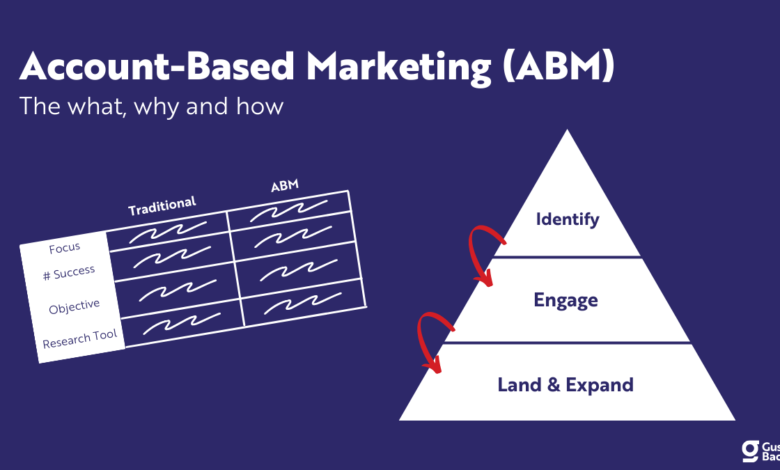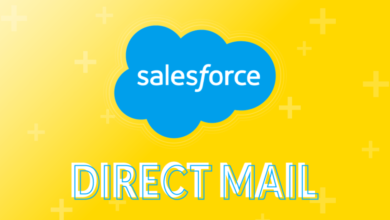Account-Based Marketing in B2B: A Go-To Practical Guide

Account-based marketing (ABM) is a potent B2B strategy for better leads, faster sales, and revenue growth. This approach customizes messages and campaigns to each account’s unique needs, resulting in higher conversion rates and multiplied ad campaign ROI. Over 90% of B2B marketers either use or plan to implement ABM.
ABM treats individual accounts uniquely, focusing on high-value prospects closely aligned with the ideal customer profile (ICP). It demands research upfront but enhances conversion rates and deal sizes while engaging target accounts more effectively. ABM adoption is surging as it unlocks growth opportunities and builds stronger customer relationships.
If you’re a B2B marketer aiming to achieve higher results with your ABM efforts, you can build a coherent and growth-oriented ABM strategy by following these necessary steps.
1. Crystalize the ICP Definition to Target High-Value Accounts
Effective account-based marketing (ABM) starts with developing an Ideal Customer Profile. These accounts offer the highest lifetime value and conversion potential. Channeling ICP marketing efforts on those accounts will pay off with increased revenue gains and reduced cost per lead.
Start with a comprehensive analysis of your current customer base, identifying common firmographic traits. Tools like Apollo, ZoomInfo, and LinkedIn Sales Navigator are invaluable for sourcing companies that match your ideal criteria. Prioritize these accounts based on potential deal size and readiness, utilizing predictive lead scoring.
However, firmographics alone won’t suffice. Effective ABM demands understanding pain points and challenges. Those can be gleaned from intent data, social media, reviews, and customer surveys.
2. Consider Your Accounts’ Behavioral Signals
In account-based marketing, delving deeper than surface-level firmographic data is imperative. While basic company information like industry, size, and revenue offers a foundation for identifying potential accounts, a more profound understanding is required to determine buying potential and resonate with their specific needs. Here are some essential tactics:
- Look Into Technographics. Investigate the technologies an account employs, providing insight into solvable pain points. Technographic data reveals their existing marketing automation platform, CRM, or e-commerce system.
- Track Buying Signals. Utilize intent data from tools like Bombora and Demandbase to spot accounts actively researching solutions or related topics in your niche. Prioritize engagement with these high-intent accounts.
- Listen on Social Media: Employ social listening to gain real-time insights into account challenges and frustrations. Monitor discussions within your target accounts on social platforms to identify opportunities to position your solution as the remedy.
- Conduct Surveys. Create surveys and questionnaires to inquire about account needs and goals directly. You can run surveys as a part of your b2b demand generation campaign, offering customers to share their minds in exchange for free downloadable content.
- Build Account Profiles. Consolidate your research into comprehensive account profiles encompassing technology usage, pain points, challenges, goals, key stakeholders, and past interactions with your company. These profiles should provide a holistic view of the account, enabling personalized messaging and campaigns.
By employing these strategies, you pinpoint target accounts with the greatest potential value and construct highly customized ABM initiatives. The amassed firmographic, technographic, and behavioral data will be the driver helping you to deliver highly personalized propositions. Therefore, the target audience will recognize them as an ideal fit for their actual needs.
3. Equip Your Sales Team for Success
Sales and marketing alignment is paramount for ABM’s success, and both units must work towards nurturing and converting accounts. Here are key steps to empower your sales team for ABM success:
- Collaborate on Outreach. Strategize outreach efforts for target accounts. While marketing nurtures prospects through digital campaigns, sales can engage through personal communication to win customers’ trust and push unique, tailored offers.
- Inform About Buying Stage. Keep the sales team informed about the stage of the buyer’s journey for each target account. This way, they can initiate contact at the opportune moment. For instance, if an account has visited pricing pages on your website, sales can follow up to specify options and special propositions.
- Establish Clear Metrics and Goals. Define metrics and goals for target account conversion for marketing and sales. Such as sales qualified leads (SQLs), emerged opportunities, and close-won deals per account.
With aligned sales and marketing teams equipped with account insights, outreach tools, and clearly defined goals, you can build truly growth-oriented ABM campaigns.
4. Share Vital Account Insights Between Teams
To maximize the potential of account-based marketing, sales and marketing teams must collaborate closely. Both teams should share the same target account list and objectives.
The Marketing must zero in on personalized campaigns to warm up accounts until they’re ready for sales engagement. Work with sales leaders to define criteria for an account to be deemed “sales-ready.” Marketing nurtures accounts until they meet these standards.
5. Optimize ABM Approach and Scale Joint Efforts
Define clear success metrics from the start to optimize and scale your ABM program. Those should be new sales opportunities, pipeline growth, and won deals from ABM accounts. Besides, growth gurus generally recommend keeping an eye on response rates, content performance, and sales cycle length for better insights.
Try to delve into ABM campaign analytics to detect what targeting accounts have stood out with higher response rates. If you see that B2B customers of specific industry or company sizes engaged more actively, you should double down on them in future campaigns.



